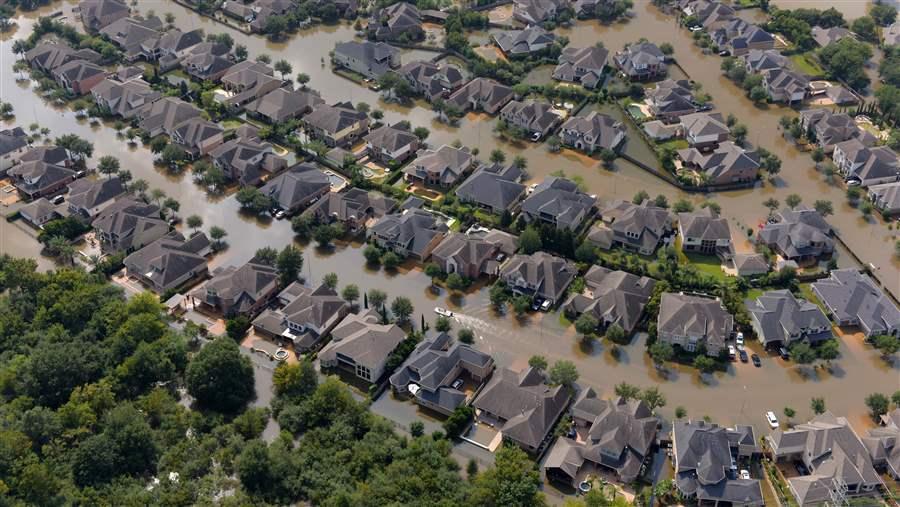House Passes Flood Insurance Reform, Offering New Solutions for Federal Program
Bill addresses oft-flooded properties but ignores critical issue of mitigation
A U.S. House of Representatives bill passed today would repair numerous holes in the National Flood Insurance Program (NFIP), which provides federally backed insurance to roughly 5 million policyholders across the country. But the legislation falls short of fully fixing the NFIP, which has drawn widespread criticism as being both too generous in its subsidized rates for risky properties and too costly to taxpayers. The program is set to expire Dec. 8 unless Congress reauthorizes it.
The 21st Century Flood Reform Act (H.R. 2874) addresses the growing and costly drain of repeatedly flooded properties on the NFIP. Historically representing just about 1 percent of policyholders but roughly 25 to 30 percent of the program’s claims, the number of these properties has been growing and may continue to increase as lower-risk property owners opt for private flood insurance.
The bill would also require property sellers and leasers to disclose flood history and risk, and for the first time would enable the federal government to deny coverage to the riskiest and costliest properties.
Specifically, H.R. 2874 would:
- Mandate that communities with 50 or more repeatedly flooded properties implement improved floodplain management and mitigation to limit the growth of such properties. Of the nearly 22,000 communities participating in the NFIP, only about 700—in 35 states and Puerto Rico and the Virgin Islands—would be required to take these additional actions. Some of those communities are already doing so through their participation in the program’s Community Rating System.
- Require states to enact disclosure laws by Sept. 30, 2022, mandating that property sellers and lessors disclose prior flood damage and insurance claims, any designation as a repetitive loss property, and any obligation to carry flood insurance associated with previous disaster assistance. A national requirement such as this would ensure that prospective buyers and renters know whether a property has flooded or is at risk of flooding, and would enable them to factor the cost of insurance or mitigation into their purchasing decisions.
- Allow the Federal Emergency Management Agency (FEMA), which administers the NFIP, to deny coverage to owners of extreme loss properties who refuse offers of mitigation assistance and to owners of properties that accrue new claim payments in excess of three times the replacement value of the structure.
The Pew Charitable Trusts supports these provisions but believes that Congress must go further to improve and modernize the NFIP. Therefore, we encourage the Senate, in its flood-reform proposal, to include the above provisions along with measures that the House omitted—notably support for flood mitigation to allow officials in flood-prone areas to begin to reduce risk before disasters strike.
To accomplish that, the Senate could start with an existing bill, the State Flood Mitigation Revolving Fund Act of 2017 (S. 1507), which was introduced in June and would provide low-interest loans to communities, homeowners, and local businesses for pre-disaster preparations such as elevating structures and buying out property in high-risk areas. This would help break the cycle of paying to rebuild flood-damaged properties repeatedly: Studies show that every dollar invested in pre-disaster mitigation saves the nation $4 in future losses.
A revised NFIP that includes a strong commitment to risk-reducing mitigation, as envisioned in S. 1507, is one way to return the program to financial solvency, with affordable rates for policyholders.
This year’s hurricane season exposed an urgent need to improve flood preparedness in many American communities. By sending a comprehensive revision of the NFIP to President Donald Trump for his signature, Congress can show that it is committed to reducing risk from future storms and minimizing the federal government’s exposure to risk.
Laura Lightbody directs The Pew Charitable Trusts’ flood-prepared communities initiative.












